Why the City of Tunis Is North Africa’s Rising Star
Tunis, the capital of Tunisia, might not be as familiar as other cultural hubs in the Mediterranean, but Nomad Lauren shares why its attractions rival Marrakech, Cairo, and Rome, with fewer crowds.
 Photo © Lauren Keith
Photo © Lauren Keith
By flying under the radar, Tunisia’s under-visited capital retains an authentic sense of self. It’s easy to draw comparisons to better known – and widely diverse – doppelgangers elsewhere around the Mediterranean, and it’s this improbable mixture of place that makes Tunis so dynamically different.
The UNESCO-listed Medina of Tunis
I wander through the tangled alleyways of Tunis’ Medina – the old walled part of town that’s a common feature of ancient North African cities – accepting the adventure that comes in getting lost in a square mile of labyrinthine lanes. The UNESCO-listed Medina was founded as a settlement in 698 AD, and for more than a millennium, the city existed only within these walls. Today, tradition still reigns supreme. Centuries-old mosques and markets continue to be local meeting points, and the elaborate bathhouses, mausoleums, fountains, and palaces, hidden behind brightly painted, metal-studded doors, hark back to a well-pampered past.
As I walk, I notice that the squeezed-in shops cater for residents’ needs, instead of being stuffed to the brim with the imported tourist tat that’s sadly taken over medina stalls in neighboring countries. Marrakesh and Fez in Morocco have become the poster children of the North African medina experience, but because of their popularity, some visitors come away feeling like they’re all for show, a Disney-fied construction instead of a living, breathing neighborhood.
Stopping me in my tracks, a shopkeeper, genuinely curious about how I ended up here, offers me a glass of piping hot mint tea that doesn’t come with a strings-attached sales pitch. Instead, after a cobbled-together conversation, he sends me on my way with a humble request: “Please tell all your friends to visit us.”
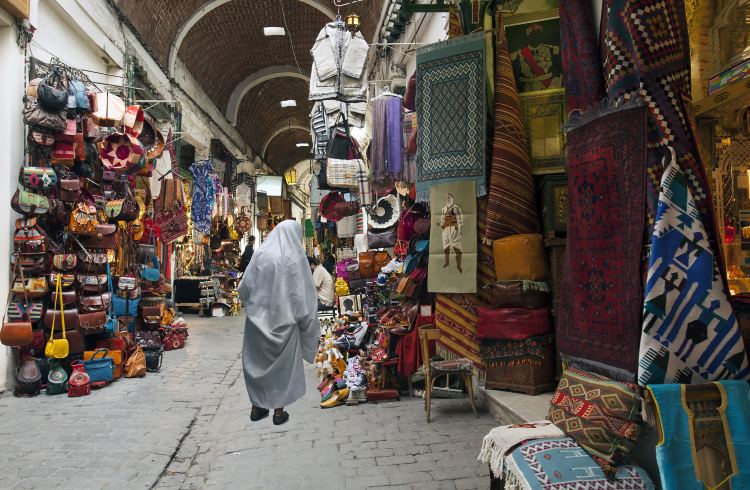
Roman ruins in Carthage
I take the rickety, suburban TGM train a few stops out of the city center to Carthage, a well-to-do suburb whose very name carries the heavyweight of history as one of the ancient world’s wealthiest cities and most important trading ports. I huff and puff to the top of Byrsa Hill, where the ruins of a Phoenician-era neighborhood from the first millennium BC poke out from the earth, its street grid still intact. In the distance, the Gulf of Tunis glitters blue in the sunlight, and I follow its magnetic pull down to the Roman-built seaside Antonine Baths, the largest bathhouse outside ancient Rome. I imagine the Romans relaxing among this sprawling complex, the water and ocean views a balm for this seafaring civilization.
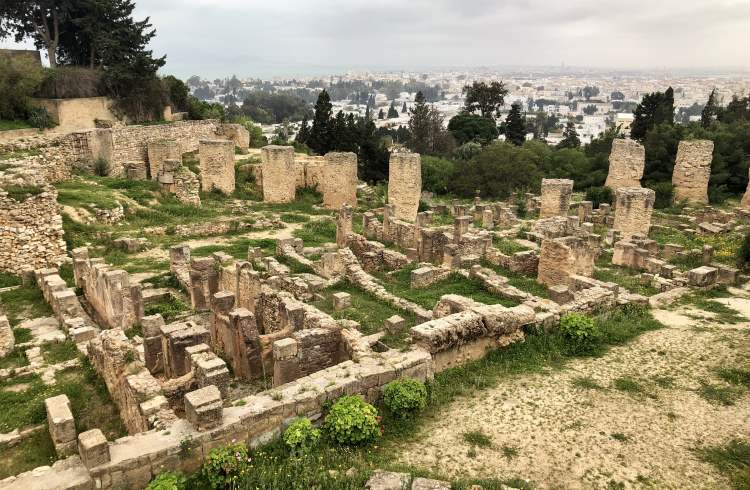
Sidi Bou Saïd
If visitors know anywhere in greater Tunis, it’s undoubtedly Sidi Bou Saïd, a postcard-perfect clifftop village that’s perched precariously above the sea. I hop back on the TGM train heading away from the city, and then disembark and climb the hill up to the whitewashed town.
Sidi Bou Saïd is the only place where I encounter people who are obviously visitors, who have come to take selfies on the cobbled lanes and snack on bambalouni, a donut-like ring of honey-soaked, oil-fried dough. I can’t resist one either, as I slowly wander past the brightly contrasting ocean-blue window shutters, arched doors and umbrella tops against the chalky buildings. If I didn’t have my bearings, I could have sworn that I had gotten off the train in Santorini. I drop into an elevated, open-air cafe for a mint tea and slouch into a front-row seat for an afternoon of people-watching, and then a lazy gaze at the sky as it turns pastel come twilight.
Bardo National Museum
The next morning, I take the tram to the Bardo, easily one of Africa’s finest museums, which houses a priceless collection of Roman mosaics that have been uprooted from archeological sites across the country in the name of preservation, as well as artifacts from other civilizations. It’s not only the wonderful, nearly complete mosaics that make me gasp, but also the setting – inside the palace of an Ottoman monarch, which would be museum-worthy even without any collections. Blankets of ancient Roman tiles lie under intricately carved domes, can be observed from grand balconies, and lead to small patios with marble fountains. I’m utterly transported by the exhibits, as I have been by the rest of my experiences in Tunis.
With offerings that rival the medinas of Morocco, the museums of Cairo, and the ruins of Rome, the capital of North Africa’s smallest nation has cultural cache to spare.
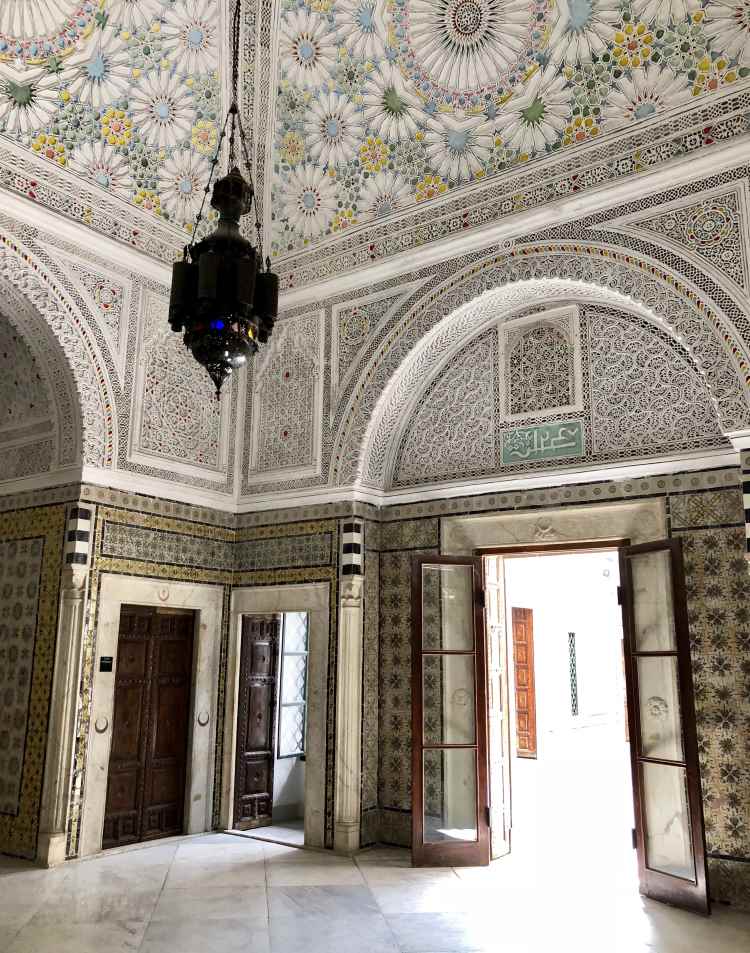
Trip Notes
Most international flights land at Tunis-Carthage International Airport, and it’s best to arrange a transfer through your accommodation, as the taxi cartel will ensure that you’re paying double the standard fare, or more. Fortunately, outside of the airport, taxi prices are reasonable for getting around the city.
A suburban train line, The Tunis-Goulette-Marsa (TGM), runs from central Tunis to Carthage and Sidi Bou Saïd, and a tram system operates within Tunis. Public transit tickets can cost as little as 0.7 Tunisian dinar (about US $0.25).
As independent travelers have not been a huge part of Tunis’ economy for many years, knowing a few phrases in French or Arabic is helpful. Older, traditional neighborhoods such as the medina tend to be more conservative, so both men and women should dress to cover everything between their elbows and knees.
Accommodation can be found all over the city, but the most atmospheric choices cluster in the medina and Sidi Bou Saïd.
Related articles
Simple and flexible travel insurance
You can buy at home or while traveling, and claim online from anywhere in the world. With 150+ adventure activities covered and 24/7 emergency assistance.
Get a quote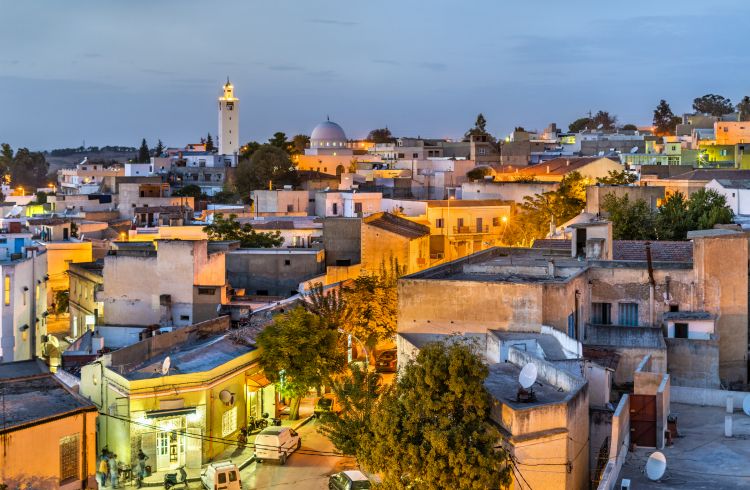
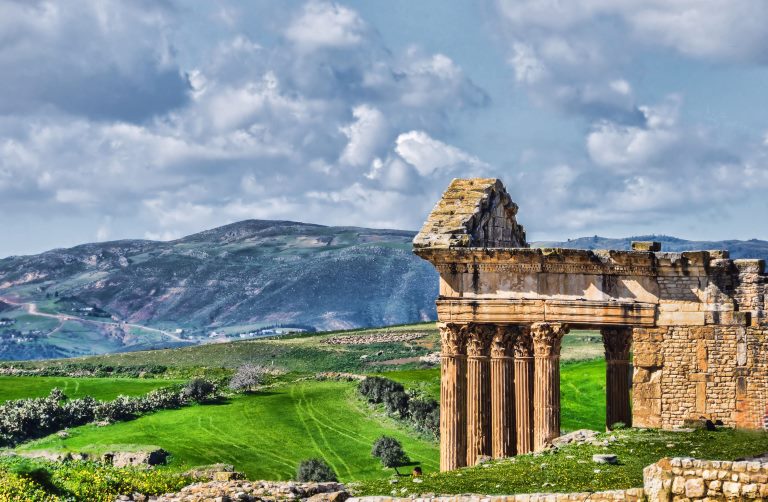
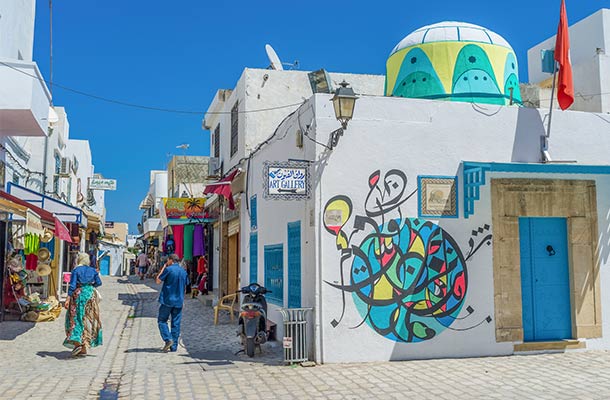
No Comments